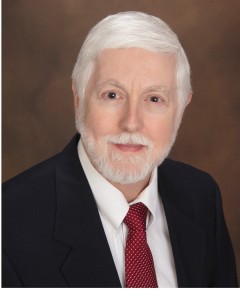When a Psychiatrist Shoots to Kill
A doctor defended himself and others from a violent patient, but he had to break a no-gun policy to do so.
‘More might have died if doctor had not shot gunman” — so read the headline in the Philadelphia Inquirer on July 27. On the previous Thursday, a patient, Richard Plotts, entered the office of his psychiatrist, Lee Silverman, M.D., with his caseworker, Theresa Hunt. Plotts then became very upset and killed Hunt with two shots to her head. While this was happening, Dr. Silverman tried to take cover, drew his handgun, and shot the attacker three times. The doctor suffered slight wounds from bullets that grazed his head and hit his thumb. Staffers then succeeded in subduing the wounded Plotts. He was hospitalized in critical condition and now faces murder charges.
District attorney Jack Whelan said: “If Dr. Silverman did not have the firearm and did not utilize the firearm, he’d be dead today. And other people would be dead.” In fact, the doctor had breached the facility’s “no firearms” policy by carrying a weapon with him to work. The facility released a statement saying that it looked forward to his “return to serving patients at our hospital.”
Plotts had a previous record of violence, including suicide attempts, and he has been involuntarily committed twice to psychiatric care, most recently last year. He was a convicted felon, with two gun-related convictions, and he had served time in prison for bank robbery. His violent behavior had led a local homeless shelter to ban him, and he had caused previous trouble at the hospital. In another article, Plotts’s ex-wife described him as abusive and violent, and she also has said that she remains afraid of him 15 years after their divorce. What was he doing with a firearm? Oh, of course: It was illegal. Convicted felons are prohibited by law from owning a weapon.Theresa Hunt, by all accounts, was a dedicated, caring woman who made it her life’s mission to help those in need of mental-health care and social services. She recognized the risk she faced from unstable patients. She probably died instantly.
In deciding to carry a loaded handgun at his workplace, Dr. Silverman judged that he would be wise to ignore the hospital’s no-guns policy. No one should fault him for this. Perhaps he recognized that it was more important to protect lives than to trust in the false promises of safety offered by “gun-free zones.” Every year mental-health professionals are assaulted by clients, and some are killed. Psychiatrists are the physicians most likely to encounter unpredictably dangerous patients. With the exception of threats and one knock-down, I have been spared so far. But I do know a colleague whose patient shot himself dead in the psychiatrist’s office, and a patient of mine slashed her throat in the waiting room of my clinic. Contrast Dr. Silverman’s experience with that of Kathryn Faughey and Kent Shinbach, two doctors who were unarmed when attacked by a delusional schizophrenic patient in 2008. In that assault, Dr. Faughey was killed and Dr. Shinbech was injured.
The hospital’s announcement that it will welcome Dr. Silverman back once he recovers is amazing compared with the usual treatment of employees who choose self-defense over death and end up being fired for breaching no-gun rules. Dr. Silverman and the staffers exercised a good dose of ordinary, self-preserving common sense — and in doing so they became extraordinary heroes.
Another element of this tragedy, one to which all physicians can relate, is that doctors are taught, first and foremost, the golden rule of medicine: “Do no harm.” It would be a particular grief for a physician to have to harm or kill a patient intentionally. We hope never to have to respond to any patient with anything but care and compassion. But that may not be possible, or right, when a patient is the cause of harm.
Responsible people do right by themselves and, especially, others. Is it possible that we are finally coming to understand that doing right can include using guns, too?

— DRGO editor Robert B. Young, MD is a psychiatrist practicing in Pittsford, NY, an associate clinical professor at the University of Rochester School of Medicine, and a Distinguished Life Fellow of the American Psychiatric Association.
